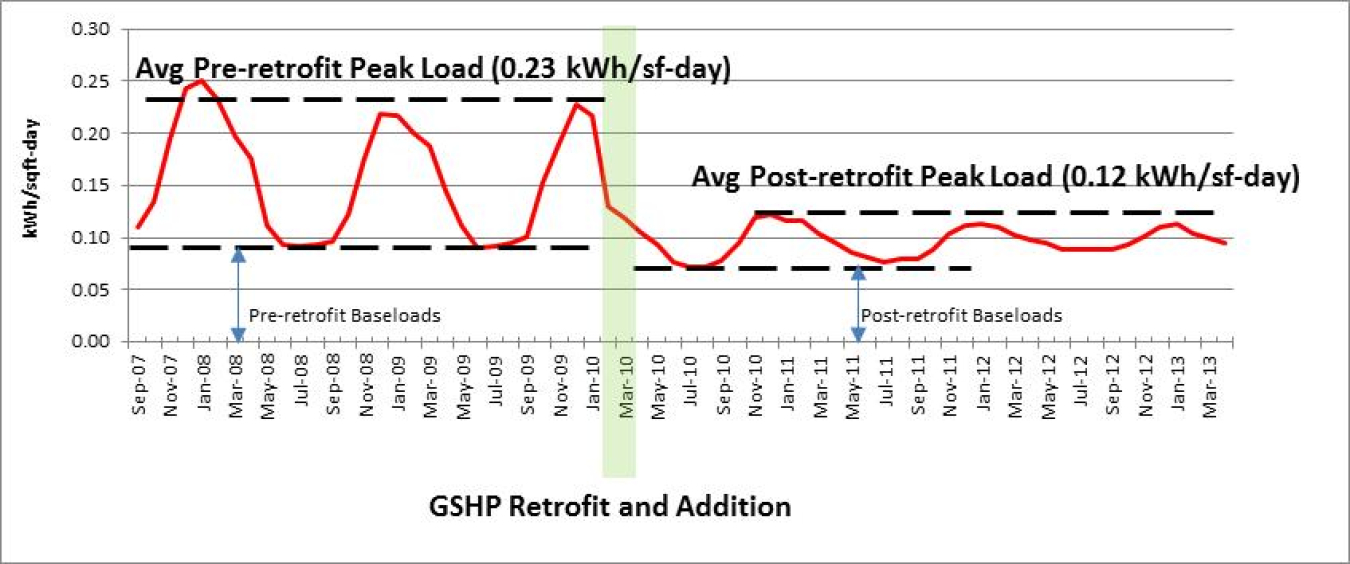Lead Performer: Oak Ridge National Laboratory - Oak Ridge, TN
July 22, 2014
Comparison of building energy use before and after GSHP retrofit (result from the case study for one of the ARRA-funded GSHP demo projects).

Images of Recovery-Act funded Ground Source Heat Pump projects.
Lead Performer: Oak Ridge National Laboratory - Oak Ridge, TN
Partners:
-- CDH Energy - Cazenovia, NY
-- University of Tennessee - Knoxville, TN
-- Cedarville Schools - Cedarville, AR (ARRA grantee)
-- Flathead Electric Cooperative - Kalispell, MT (ARRA grantee)
-- University at Albany - Albany, NY (ARRA grantee)
-- City of Raleigh, NC (ARRA grantee)
-- Montana Tech (ARRA grantee)
-- Oakland University - Rochester, MI (ARRA grantee)
DOE Funding: $450,000
Cost Share: N/A
Project Term: October 2012 - September 2016
Recovery Act Ground Source Heat Pump Portfolio
The U.S. Department of Energy was allocated funding from the Recovery Act to research ground source heat pumps.
Project Objective
ORNL previously estimated the economic savings potential of ground source heat pump systems (GSHPs) at 3.4 to 3.9 quads BTU annually. However, the high initial cost of GSHPs and a lack of public awareness and trust are preventing a wider adoption of GSHPs from its current less than 2% market share. This project will analyze the costs and benefits of GSHP demonstration projects funded by the American Recovery and Reinvestment Act. The analysis could identify good and bad design, installation, and operation practices, as well as lessons learned and best practices. This information will help improve the performance of future GSHPs and is also essential for determining the economic viability of investments in GSHP systems, which is vital for bringing in third-party financing to mitigate the systems’ high initial cost.
Project Impact
Regions with robust GSHP design and installation infrastructures demonstrate that GSHP systems can be competitive on first cost in new construction and in retrofit applications versus conventional systems in these applications. Case studies will foster greater project activity in more parts of the country, expanding the areas where robust GSHP design and installation infrastructures exist. With improved design, reduced cost, and increased public awareness and trust, it is expected that GSHP systems will capture at least 10% of the target market segments by 2030.
Contacts
DOE Technology Manager: Antonio Bouza
Performer: Xiaobing Liu, Oak Ridge National Laboratory

